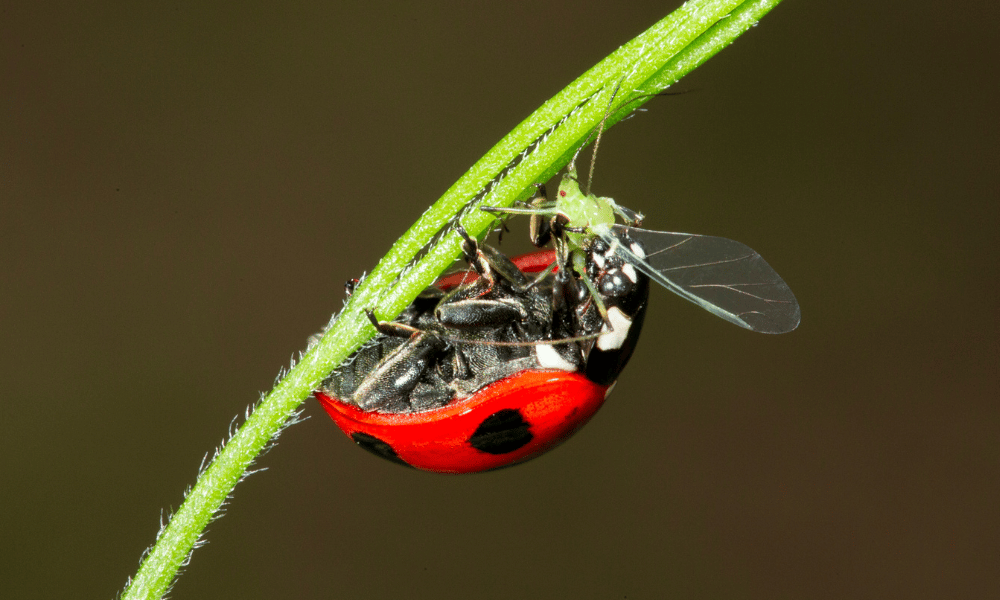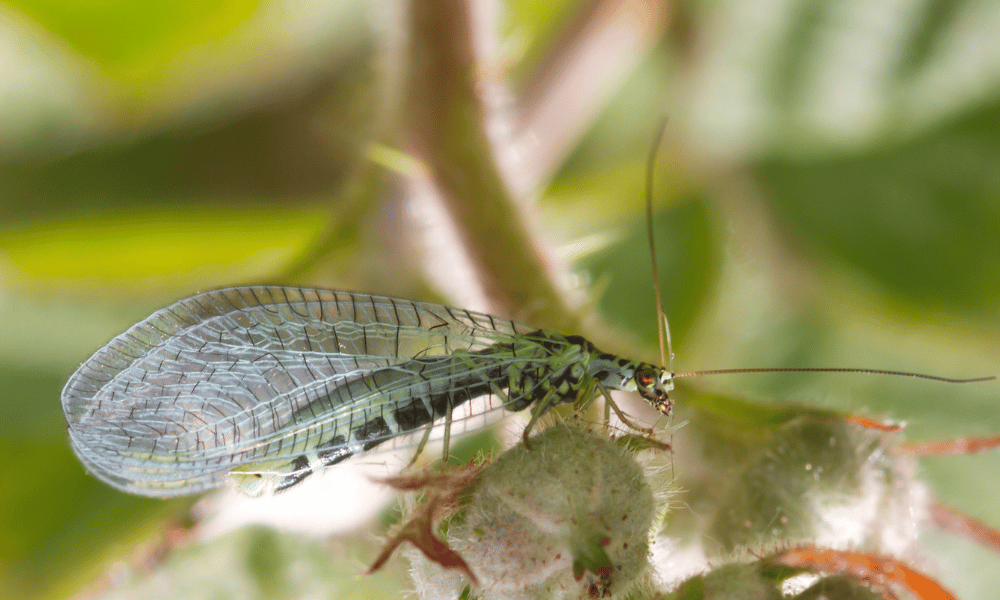Many experienced gardeners use lacewings and ladybugs in their gardens for organic pest control. These insects are commonly chosen for their intense appetite for aphids, But can you use both of these insects simultaneously? Or do lacewings eat ladybugs?
No, lacewings do not eat ladybugs, nor do ladybugs eat lacewings. These insects can coexist. These insects are so good at coexisting that you can purchase a combination of ladybug and lacewing eggs for your garden online.
Purchasing insect eggs online is a great way to start your season with the appropriate protection for your plants.
Letting beneficial insects establish themselves in the garden reduces the risk of using a chemical pesticide to keep plants happy and healthy.
Usually, you will only need to release the eggs once at the beginning of the season. Lacewings tend to stay in your garden if there are a good variety of plants that they enjoy.
Ladybugs, however, should be released at night. Your neighbour’s garden may tempt these insects if you do not let them establish overnight. They may also choose to leave in the morning, ladybugs are a much higher flight risk than lacewings.

What Eats Ladybugs?
Ladybugs are a beautiful bright shade of red. Do not confuse these beneficial insects with their orange look-alike, the Asian beetle.
Unlike the orange invasive species, ladybugs are incredibly beneficial to gardens as they eat up to 50 aphids daily! They also are incredibly friendly creatures and are lovely to see in the garden.
However, since ladybugs are so small, they have quite a few natural predators. Birds seem to be the number one predator of ladybugs. In addition to birds, frogs, wasps, spiders, and dragonflies will also make a meal of ladybugs.
Assassin bugs and stink bugs are also not ones to pass up a delicious snack of a ladybug. With so many natural predators, it is hard to imagine keeping your garden ladybugs safe.
Providing coverage and safe places for ladybugs to hide and lay eggs helps keep the population up. The more ladybugs you have, the fewer aphids you’ll have eating your plants.
If you notice an explosion in the ladybug population in your garden, you may also have a large aphid population. But do not worry; the ladybugs will help keep that under control.
What Else Do Lacewings Eat?
Lacewings may be known as “aphid lions”, but they help protect your garden from much more than just those small pesky pests. Adult lacewings eat nectar and pollen from flowers, providing essential pollination of many flowers and crops.
While pollination is undoubtedly an incredible benefit, the larvae stage lacewings arguably benefit your garden the most. These small freshly hatched lacewings will eat aphids, mites, whiteflies, mealybugs, leafhoppers, and thrips.
These small pests can easily overtake your garden and ruin the fresh foliage on almost every plant. Lacewing larvae will eat pests, protecting your garden from them, as well as grow into adults that will then, in turn, pollinate the flowers.
Adult lacewings are unlikely to eat aphids, but their larvae will! This is why encouraging lacewings is a great way to control an aphid infestation.
What Other Benefits Do Lacewings Bring?
Lacewings are known for their aphid eating super skill, eating so many aphids they earned the nickname “aphid lion”.
While they also eat a variety of other small garden pests like mites, whiteflies, mealybugs, leafhoppers, and thrips, larvae lacewings are not the only stage that provides benefits.
Adult lacewings will help pollinate flowers as they survive from nectar and pollen.
Pollination is an important process for many crops to produce fruits or vegetables. Tomato plants, for example, grow small flowers well before they grow the tomatoes. These flowers will need to be pollinated to produce the seeds in the tomato.
The pollination of a plant is when the pollen from the male part of the flower enters the female part of the flower. The female part of the flower then begins to produce seeds and seals them in a tomato.
The tomato will grow and ripen and when we cut it open, we can see all the tomato plants seeds.
Summary
Lacewings and ladybugs are excellent natural pest control options for your garden this year. They help keep the pest population down without using any chemicals or sprays.
Lacewings do not eat caterpillars. However, there are many predators of ladybugs. Birds, frogs, wasps, spiders, dragonflies, assassin bugs, and stink bugs all eat ladybugs as a food source.
Lacewings eat a variety of different garden pests in their larvae stage. In addition to aphids, mites, whiteflies, mealybugs, leafhoppers, and thrips are all on the menu for these predators.
Once lacewings become adults, they feed almost solely on nectar and pollen from flowers. Due to their food sources, lacewings are actually very effective pollinators.







